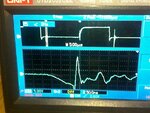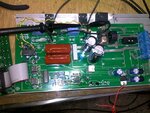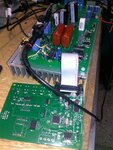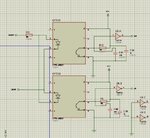anotherbrick
Full Member level 4

- Joined
- Jan 10, 2009
- Messages
- 222
- Helped
- 1
- Reputation
- 2
- Reaction score
- 1
- Trophy points
- 1,298
- Location
- Istanbul , Turkey
- Activity points
- 3,190
hello dear Forum,
I have designed a 1 KW ultrasonic generator with an half bridge for 28 KHz frequency
however I am facing a problem with false turning ON of IRFP460 mosfets
the H mosfet is driven ON (unwanted peak) when the L mosfet is driven ON (wanted) by IR2113
and vice versa
I have scetched the circuit and mosfet gate signals at attached drawing
what is your advice how can eliminate the unwanted gate signals
thank you
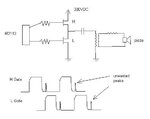
I have designed a 1 KW ultrasonic generator with an half bridge for 28 KHz frequency
however I am facing a problem with false turning ON of IRFP460 mosfets
the H mosfet is driven ON (unwanted peak) when the L mosfet is driven ON (wanted) by IR2113
and vice versa
I have scetched the circuit and mosfet gate signals at attached drawing
what is your advice how can eliminate the unwanted gate signals
thank you




